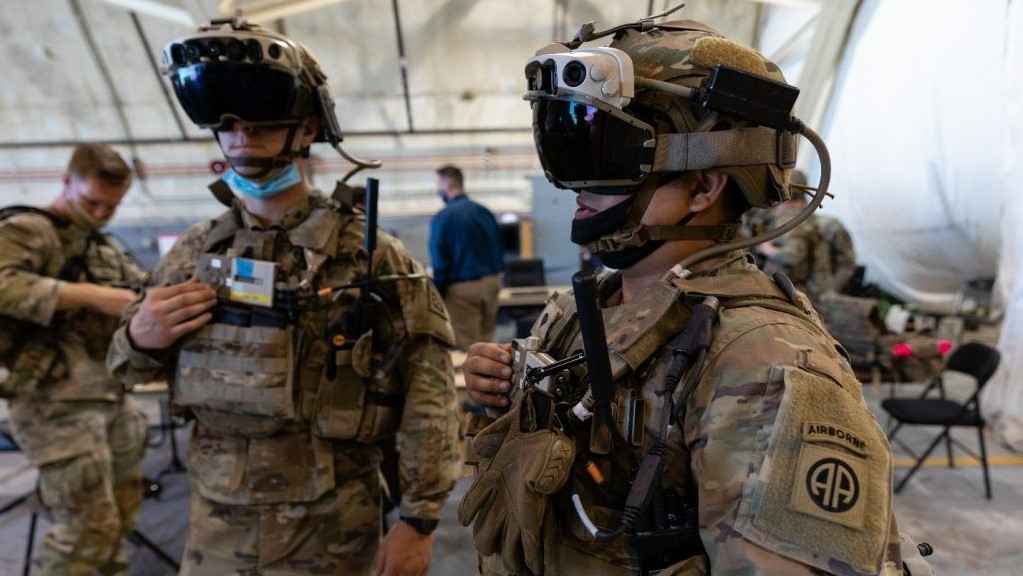HoloLens for the US military isn't dead, thanks to 'next phase' approval
The US Army greenlit the next development phase of an augmented reality device.

What you need to know
- The US Army has approved the next development phase for version 1.2 of Microsoft's militarized HoloLens headset known as IVAS.
- Evaluation of the entry was done by soldiers with 1st Battalion, the Infantry Regiment, 1st Infantry Brigade Combat Team, 10th Mountain Division.
- The development team is currently exploring ways to make more headsets while maintaining the affordability and quality of the headsets.
- Cloud computing capabilities are set to ship to the entry over the next year.
- If everything goes according to plan, the production phase is likely to commence in 2025.
Things have been particularly quiet from Microsoft's mixed reality HoloLens line, leaving it to speculation whether the company will continue its AR hardware efforts or completely abandon them. Several reports surfaced online last year indicating that the company had jumped ship, citing that Microsoft had canceled HoloLens 3.
At the beginning of this year, the US Army indicated that it wouldn't invest in the technology if the company didn't ship an updated version of the military-grade headset with sophisticated features. And the fact that Microsoft's massive layouts affected the HoloLens division didn't improve the situation.
But despite these setbacks, the next phase for the military-grade headset has been approved by the US Army for version 1.2 of the device. This is after thorough scrutiny and evaluation by soldiers with 1st Battalion, the Infantry Regiment, 1st Infantry Brigade Combat Team, and 10th Mountain Division.
While speaking to Army Times, Brig. Gen. Christopher Schneider, the Program Executive Office-Soldier commander, disclosed that the Assistant Secretary of the Army for Acquisition, Logistics, and Technology green-lit the second phase for the development of the device.
Work is underway to ensure that the device is up to par with the military's high standards. The force has been particularly vocal about their needs and wants regarding the headset, including the incorporation of cloud computing, which will, in turn, introduce nifty features and improvements to the device.

In the past, the $22 billion project has been negatively impacted by technology glitches and lack of capital, which is why the Army leaders are up in arms trying to explore new ways to manufacture thousands of these headsets while maintaining quality and affordability.
Officials indicated that the production phase could kick off as early as 2025. Versions 1.0 and 1.1 of the headset have been developed and procured by the Army for training and Doctrine Command. What's more, the branch signed off on the development of version 1.2 in January. The feedback the Army gets from putting versions 1.0 and 1.1 while performing various tasks will dictate the fate of version 1.2 and future iterations.
Get the Windows Central Newsletter
All the latest news, reviews, and guides for Windows and Xbox diehards.
With the next phase of production approved, the team seeks to strike a balance between establishing affordability and ensuring that it is able to produce a substantial number of entries. Notably, it is expected to achieve these feats within 18 months, hoping to incorporate cloud computing capabilities into the entry to enhance its user experience.
The new entry will ship with many new features and improvements, building on the ones already available in previous versions. For instance, troops will be able to download and access "a host of job-assisting apps" from the store, thus allowing them to be better prepared for any situation that might arise while in battle.
What's more, the apps can be developed and tailored to achieve specific and defined tasks, including targeting assistance for grenadiers, terrain map construction, and more. The cloud capabilities are expected to ship to the devices over the next year.
The developers are trying new ways to enhance night vision technology on the entry but haven't made any headway because of its over-dependence on analog methods. Analog methods provide better vision. However, it impedes other salient features that are essential and crucial to the headset's functionality. The team also highlighted several setbacks while developing the entry including cabling and positioning.
Analysis: The high cost of HoloLens and AR

At WWDC 2024, Apple unveiled the Apple Vision Pro VR, an augmented headset reality headset designed to enhance the visual experience for users while watching TV shows, playing games, movies, and more.
The company announced that it will start shipping the device to the US in early 2024 at $3,499. The exorbitantly priced headset received positive and negative feedback in equal measure. But as it seems, Apple might not be able to live up to its one million Vision Pro shipments by early 2024 promise.
Reports indicate that Apple is making adjustments to the production roadmap for the VR headsets and is now aiming for less than 400,000 entries in 2024. Sources familiar with the matter indicate that the manufacturing process turned out to be far more sophisticated and complex than the company had initially anticipated.
Apple is also reportedly working on developing later generations of the unit to provide users with an array of options, including a cheaper option. Granted, the market has shifted in the past couple of years. As such, it might be difficult to determine the adoption of this new technology prior to its official release.
A new Microsoft patent for a new HoloLens device recently surfaced online, potentially indicating that the division could be back in full swing after a hiatus. Speculations indicated that the patent could belong to Microsoft's "canceled" HoloLens 3. Perhaps this could be Microsoft's way of making its way back to the metaverse, reclaiming its spot alongside its competitors, Apple and Meta.

Kevin Okemwa is a seasoned tech journalist based in Nairobi, Kenya with lots of experience covering the latest trends and developments in the industry at Windows Central. With a passion for innovation and a keen eye for detail, he has written for leading publications such as OnMSFT, MakeUseOf, and Windows Report, providing insightful analysis and breaking news on everything revolving around the Microsoft ecosystem. While AFK and not busy following the ever-emerging trends in tech, you can find him exploring the world or listening to music.
